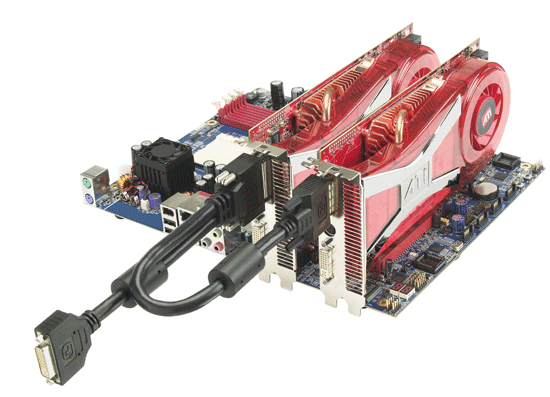ATI Radeon X1950XTX CrossFire Review
Introduction

In case you missed it, yesterday we looked at the performance of the X1950XTX and concluded that it was the fastest single video card that we’ve had our hands on. Since we have seen single card results it’s now time to see just how it stacked up to SLI and older CrossFire solutions. We’ve taken a pair of X1950XTX’s and strapped them in for a round of testing.
So what’s new with CrossFire this go around? Not a lot really. The high-end CrossFire solutions still require the dongle in order to work properly but we are expecting this to go away with the launch of ATI’s next generation DirectX 10 video card. With the introduction of Catalyst 6.7 ATI now gives users the option of running Alternate Frame Rendering by changing Catalyst AI to advanced. This gives you the ability to make CrossFire work on games that may not be getting a boost from running the pair of cards. Some games may not play nice with AFR but at least we now have the option to try!
The card we are looking at here is the X1950XTX CrossFire master card. This time around there is no XT model, for now all X1950’s are the same 650MHz GPU core and 2.0GHz memory. Owners of the highest end ATI card no longer get penalized for using CrossFire by pairing their XTX with a slightly slower XT. Pricing of the CrossFire master card is the same as the standard XTX at $450. Kudos to ATI for getting it right this time!

X1950 CrossFire will use the same dongle and all connectors are the same. Note that there is no S-video style connector on the master card, something to keep in mind if you were planning to purchase this card first, or only, and possibly upgrade to CrossFire later. Also note that X1900XTX can be used with the X1950XTX master card for CrossFire. Although I don’t really see that as a popular option it is an option none the less.
Now it’s on to the tests!

Comments are closed.